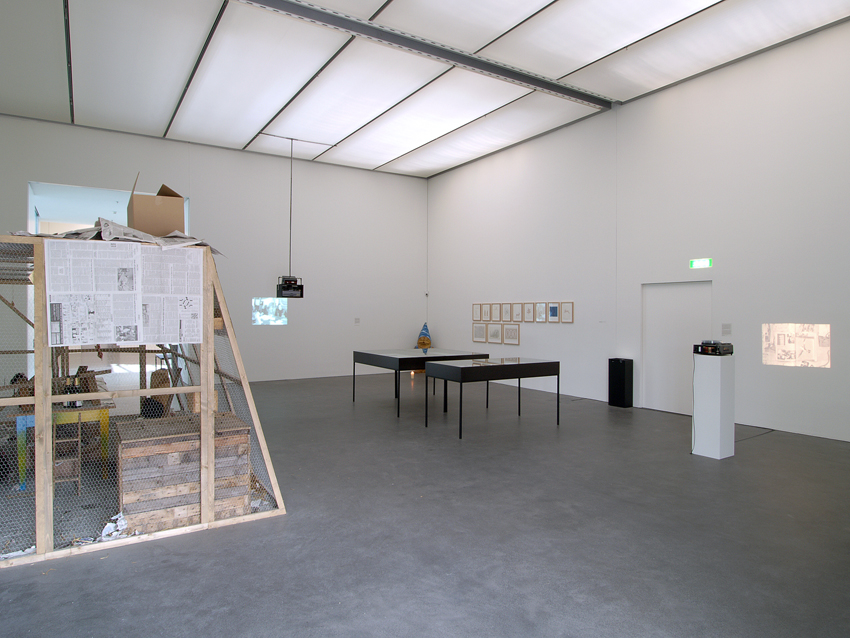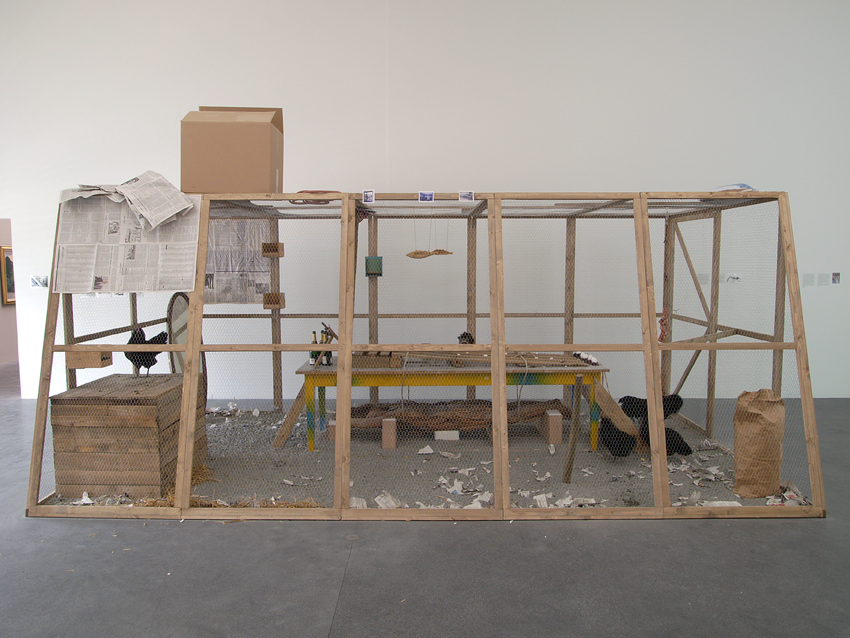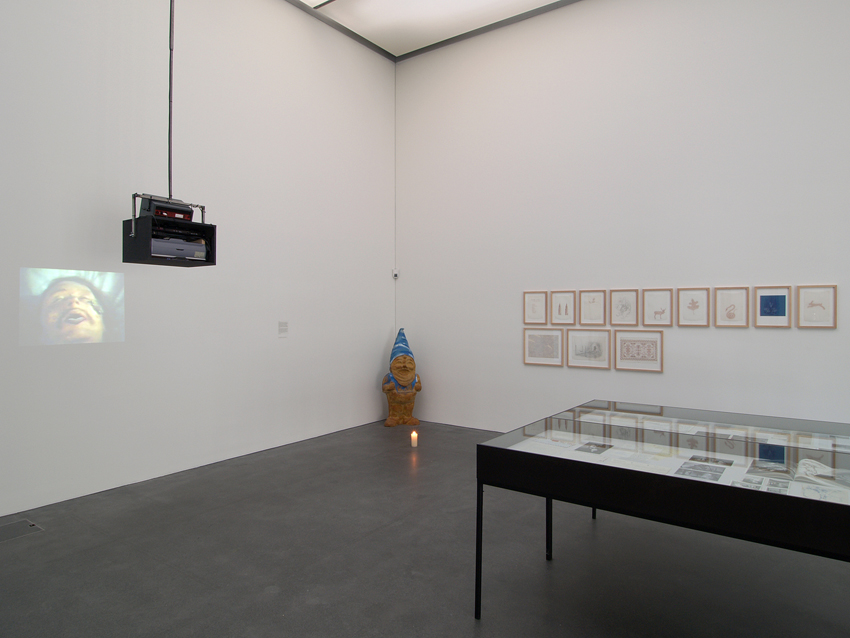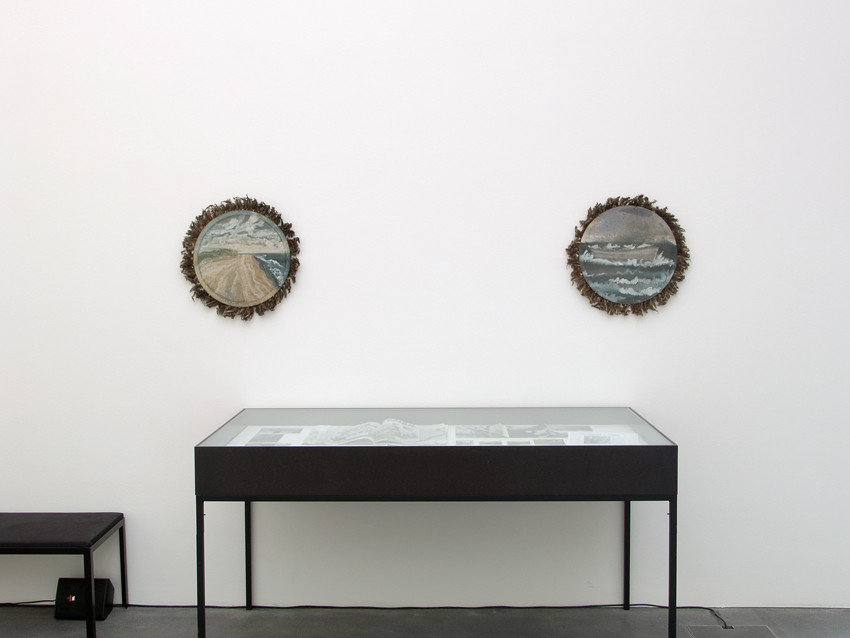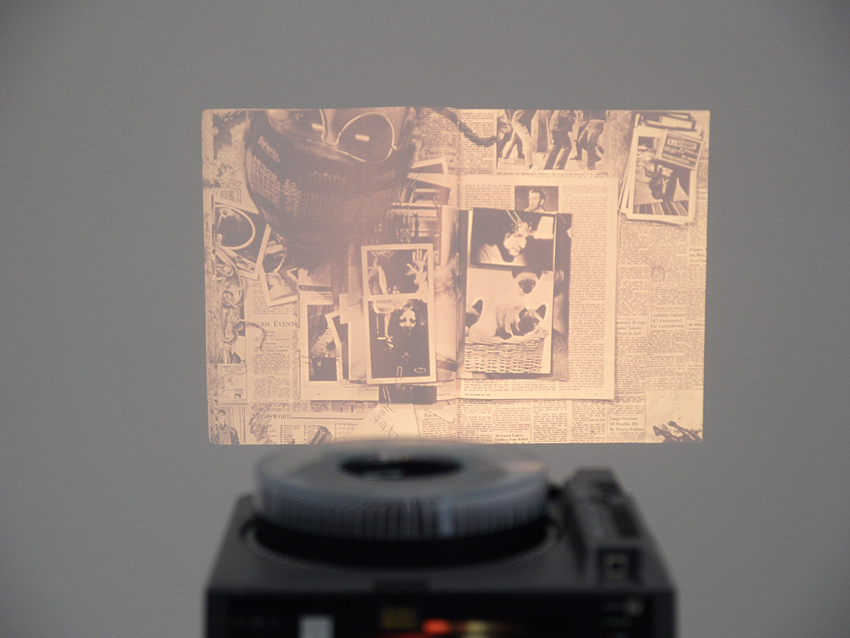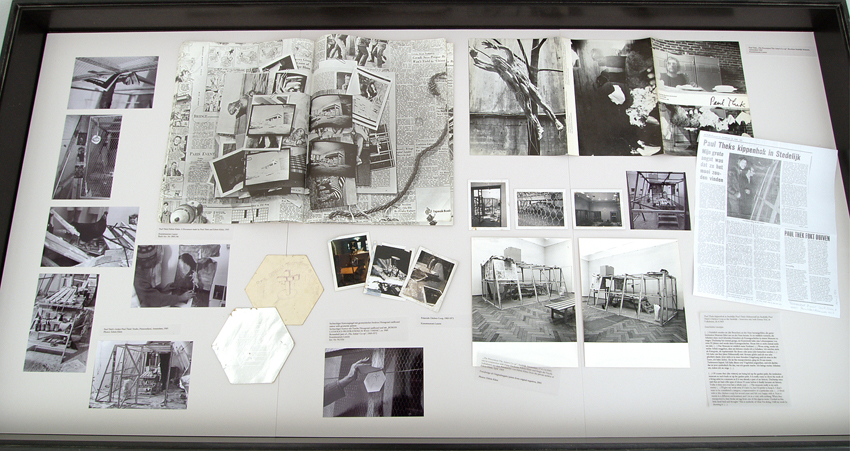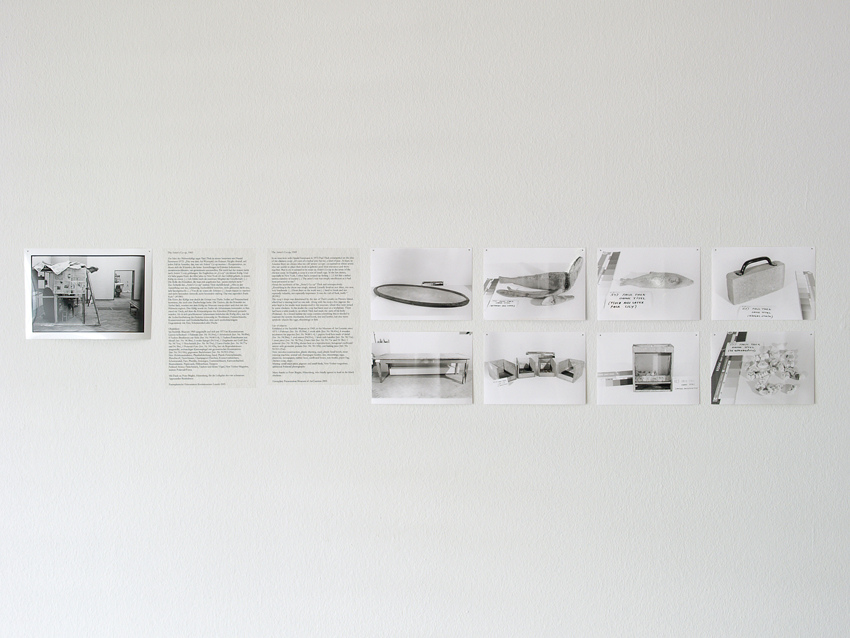Collection Lab: An exemplary presentation
Paul Thek Lucerne 1973/2005
Kunstmuseum Luzern
11.6.-24.7.2005
Photos: Stefano Schröter © Kunstmuseum Luzern/The Estate of George Paul Thek New York, courtesy Alexander and Bonin New York
In autumn 2004 the Museum of Art Lucerne launched a series of projects under the heading “Collection Lab” which marked the beginning of a new approach towards the museum’s own collection. The high innovative factor of the programmatically entitled project is due to the fact that art historical, conservatorial and curatorial questions are presented as a process and made public, and thus is academic research as it is conducted in museums, more or less intensively but normally behind closed doors. Research now takes place inside the exhibition spaces and the public can participate in its progress, which is continually documented.
The first in the series “Collection Lab” was dedicated to American artist Paul Thek (1933-1988) who in the late sixties started to attract attention with his process-oriented and site-specific installations. Over a period of seven month the approximately seventy inventorised items that make up the work group by Paul Thek in the collection of the Museum of Art Lucerne were spread out and publicly displayed as well as matched, as far as possible, to the known work ensembles such as “Dwarf Parade Table” or “Artist’s Co-op”. Also, written documents could be consulted, which shed light on the preparatory process of the exhibition “Ark, Pyramid, Easter – a visiting group show” (Museum of Art Lucerne 1973) from an organisational point of view. With the help of oral statements gleaned from interviews as well as contemporary photographic documentation we were finally able to retrieve and construct at least a fragmentary three-dimensional design of the Lucerne exhibition.
Various complex questions underlay the consideration and analysis of Paul Thek’s oeuvre, above all matters of authorship and reconstruction. Thek is one of the first to distance himself from the idea of the auctorial artist and to practice artistic co-operation not only in off-spaces but also by transferring it to the museum. The subtitle of the 1973 Lucerne exhibition, “a visiting group show”, is characteristic of this, as is the list of artists that puts Thek on an equal basis with the other artists involved. And in the case of a series of gouaches on newsprint that were produced in Lucerne co-operation went as far as Thek and Franz Deckwitz both being painters of this work. Despite overlapping collective artistic practice each member had his or her individual qualities that went into the cause of the overall work. In this way Ann Wilson assembled the element of the “Boat” in conjunction with Charles Shuts, Franz Deckwitz painted the sky of the “Sky Room” as well as that on one of the dwarfs.
Not only the results of extensive discussions within our curatorial group, but also statements of many who knew Paul Thek personally tend towards rejecting reconstructions of his installations. An installation of such encompassing dimensions as the one in Lucerne in 1973 cannot simply be reconstructed as in its physical and ideal presence it was inextricably bound up with the artist, the co-operative and, above all, time. From a museological point of view the task to find a final home for the relics and to free them, at least temporarily, from their existence as mere inventory numbers in order to attribute them a function in the context of art mediation thus becomes all the more challenging.
Testing possible forms of presentation also offers the welcome opportunity to question documentary media such as photography or video and their potential for conveying impressions, mood and zeitgeist. People do indeed ascribe to these mediators between past and present not only documentary and objective, but also (very much in the sense of Barthes’ “punctum”) emotional if not mythic qualities. This is why pictures resembling snapshots and such that run counter to classic documentary photography have been integrated into the exhibition, among them many documents that are shown in public for the first time.
On this basis the exhibition concluding the project “Collection Lab: Paul Thek” brings together two opposing curatorial concepts:
A first part presents the 1973 Lucerne exhibition “Ark, Pyramid, Easter – a visiting group show” in purely documentary form. Photographs and written documents prevail, complemented by contemporary reports from people who remember the exhibition in Lucerne.
An interpretative presentation of one of Thek’s most important installation ensembles makes up the second part. Original objects which were used in installations by Thek and his entourage of artists in various different contexts, and which today belong to the collection of the Kunstmuseum Luzern, are presented in a reconstructed chicken coop, and are thus shown in one of their historical contexts as it were. The wood and wire construction has been built with reference to Paul Thek’s environment “The Artist’s Co-op” that was installed, along with other elements, in exhibitions between 1969 and 1973. It is based on photographs of Thek’s studio on Prinsen Island near Amsterdam and the following exhibition in the Stedelijk Museum in 1969. The “Artist’s Co-op”-chicken coop represents the historical context of presentation for many of Thek’s works that are today in the collection of the Museum of Art Lucerne, among them the famous “Fishman”. This latex cast of the artist’s body, to which numerous fish have been attached, exists in four versions of which Thek constructed the first for the exhibition in Amsterdam. The reconstruction of “Artist’s Co-op” is accompanied by texts displayed on the walls and in showcases which explain the exhibits with a view to their historical classification, reception and iconography.
Both elements of the exhibition are enriched by a slide show on the artist’s book “A Document made by Paul Thek and Edwin Klein” (1969) and a video projection which combines sequences of various recordings of the artist’s friends and surroundings dating from 1969 to 1973 and which allow an atmospheric glimpse into Thek’s emotional and exciting life.
The exhibition “Paul Thek Luzern 1973/2005” is an attempt to grasp and convey in caleidoscopic form the character of a nomadic modern artist along with presenting in an exemplary way how art historical research can be incorporated into the practice of curating and exhibiting. At the same time it is about the exciting encounter between one of the most remarkable artists of the recent past and the specific place of Lucerne as well as the challenging consequences this encounter had for this place and the institution of the museum of art. Last but not least it will make available to the growing community of international Thek researchers a valuable basis for further investigation.
Curators “Collection Lab”: Peter Fischer, Christoph Lichtin, Susanne Neubauer, Sylvia Rüttimann
Curators “Paul Thek Lucerne 1973/2005”: Susanne Neubauer, Christoph Lichtin
